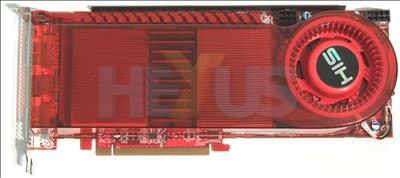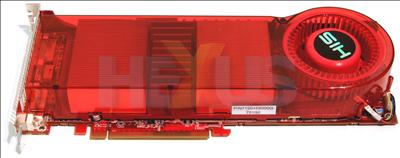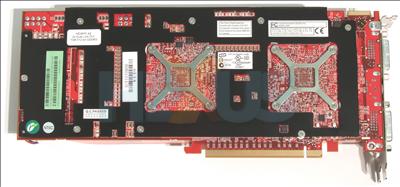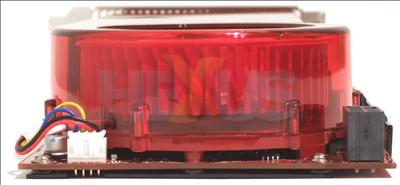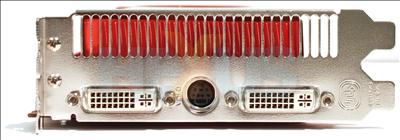A physical look
HIS's Radeon HD 3870 X2 1024MiB is entirely based on the reference design. Indeed, the only meaningful method of distinguishing it from the reference model that we reviewed on Monday is by the sticker on top of the fan.
The reasoning behind opting with the reference design is simple enough - producing your own in-house model would incur extra expense and, tellingly, a delay in getting the product to the market. The differentiating factors will be non-card-related, then; such as warranty, availability, and, perhaps most importantly, price.
Looking around e-tailers on the day of publication, the HIS Radeon HD 3870 X2 1024MiB retailed at £290, including VAT, making it a mid-price model.
It really is big, measuring 266mm x 112mm x 34mm (w x h x d), so make sure you have room for it in your chassis. Being put forward as a high-end gamers' card, we suspect that most potential purchasers will have large cases, anyway.
Housing two GPUs and putting out around 200W when running at full chat, the voluminous heatsink, split into two parts, is efficient enough to keep the fan spinning at relatively low RPMs. It's difficult to hear over and above general system noise.
The two GPUs run at 825MHz - the same speed as the shaders - and the GDDR3 memories operate at 1,800MHz.
The reference card connects both GPUs via an internal PCIe 1.1 bridge, although the conduit to the system is PCIe 2.0, a la the single-GPU Radeon HD 3870.
Continuing the reference theme, there's 1,024MiB of on-board frame buffer, split equally between the two GPUs, and connected via two 256-bit buses.
Equipped with both six-pin and eight-pin power connectors, the card will operate off either, although, for some reason, it doesn't run when plugged into just the eight-pin connector, which has more than enough power.
Plugging in both connectors opens up the OverDrive panel in Catalyst Control Center, by the way, making the card ripe for overclocking.
The hot air transferred from the GPU is pushed out of the chassis. The two DVI connectors offer audio pass-through, too, and partners usually bundle DVI-to-HDMI connectors to open the full range of 2D connectivity.






